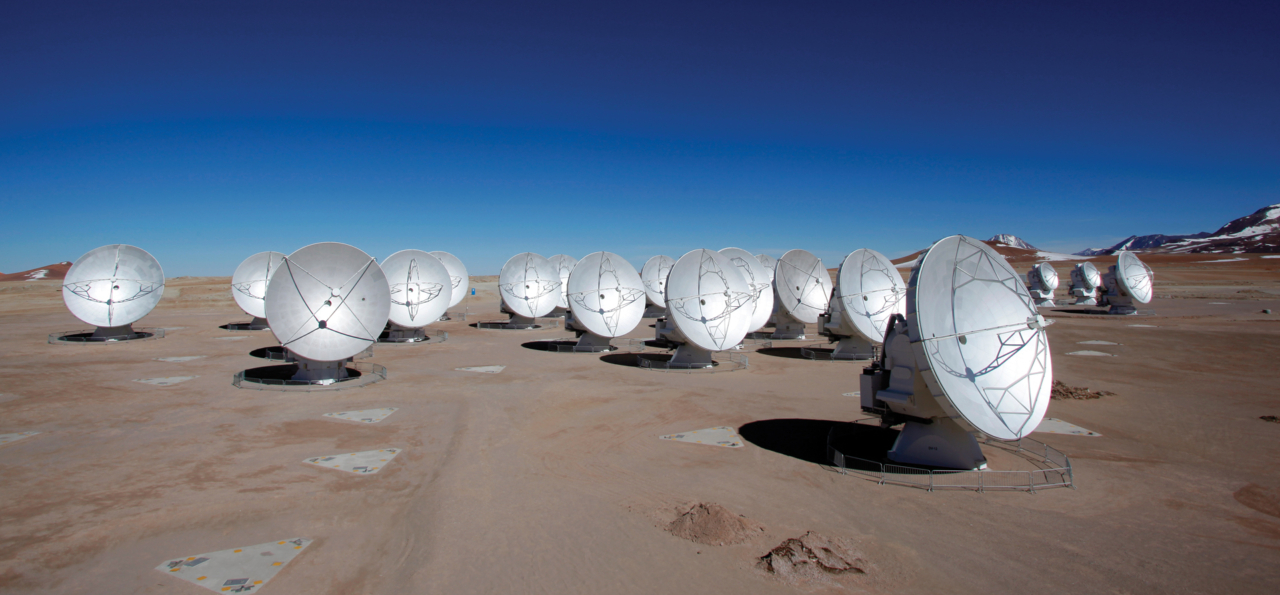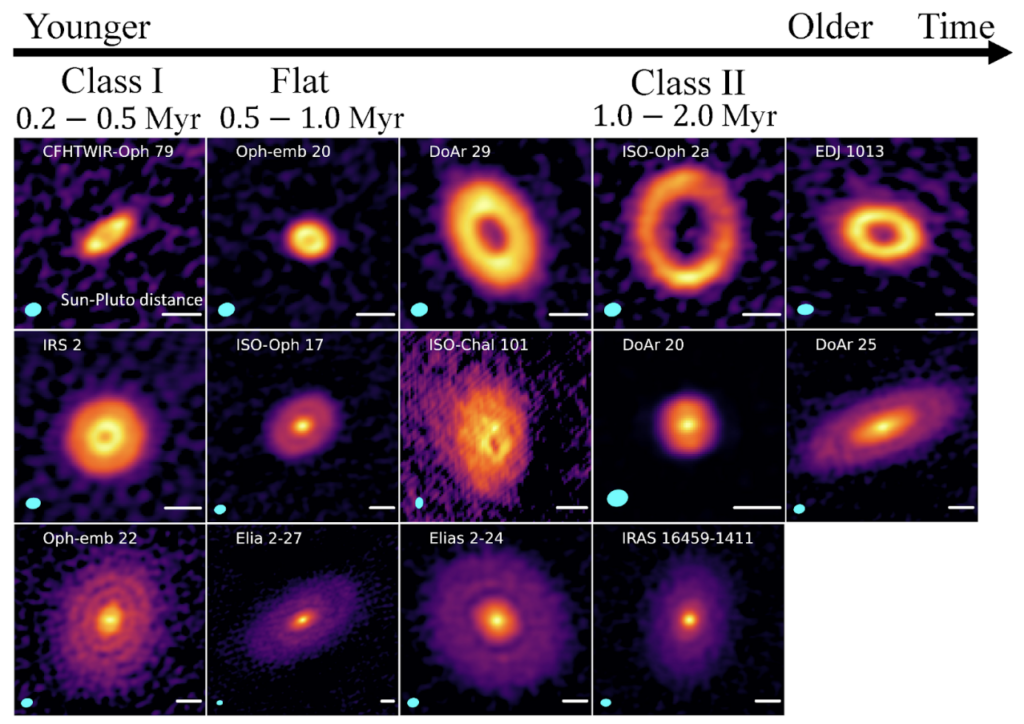AUI will present at the 247th meeting of the American Astronomical Society in Phoenix from January 4-8.
Recent News
ALMA Helps Unmask Monster Black Hole Behind Record-Breaking Cosmic Burst
Astronomers have used the Atacama Large Millimeter/submillimeter Array (ALMA) together with a suite of space- and ground-based telescopes, to study AT 2024wpp, the most luminous fast blue optical transient (LFBOT) ever observed.
Astronomers Make First Radio Detection of Rare Supernova Type, Revealing Secrets of Stellar Death
Astronomers using the U.S. National Science Foundation Very Large Array have captured the first-ever radio signals from a rare class of stellar explosion known as a Type Ibn supernova.
Early Evolution of Planetary Disk Structures Seen for the First Time

Credit: ALMA (ESO/NAOJ/NRAO)
Planet Formation May Occur Much More Rapidly than Previously Thought
An international team of astronomers have found ring and spiral structures in very young planetary disks, demonstrating that planet formation may begin much earlier than once thought. The results were presented today at the 243rd Meeting of the American Astronomical Society.
Using data from the National Radio Astronomy Observatory’s (NRAO) Atacama Large Millimeter/submillimeter Array (ALMA) the team captured images of Class 0 and Class I planetary disks, which are much younger than the Class II disks observed by earlier disk surveys. Class II disks are known to have gaps and ring structures, indicating that planetary formation is well underway. “ALMA’s early observations of young protoplanetary disks have revealed many beautiful rings and gaps, possible formation sites of planets,” said Cheng-Han Hsieh, PhD Candidate at Yale University, “I wondered when these rings and gaps started to appear in the disks.”

The evolutionary sequence of protoplanetary disks with substructures, from the ALMA CAMPOS survey. These wide varieties of planetary disk structures are possible formation sites for young protoplanets. Image Credit: Hsieh et al. in prep.
This new study shows that structure begins to form when the disks are about 300,000 years old, which is incredibly fast. Young disks can have multiple rings, and spiral structures, or evolve into a ring with a central cavity. These observations challenge our understanding of how planets form, particularly large Jupiter-like planets. “It is difficult to form giant planets within a million years from the core accretion model,” said Cheng-Han Hsieh. Future studies will pinpoint the exact time when the disk substructure appears and how that connects to early planet formation.
About ALMA & NRAO
The Atacama Large Millimeter/submillimeter Array (ALMA), an international astronomy facility, is a partnership of the European Organisation for Astronomical Research in the Southern Hemisphere (ESO), the U.S. National Science Foundation (NSF) and the National Institutes of Natural Sciences (NINS) of Japan in cooperation with the Republic of Chile. ALMA is funded by ESO on behalf of its Member States, by NSF in cooperation with the National Research Council of Canada (NRC) and the Ministry of Science and Technology (MOST) and by NINS in cooperation with the Academia Sinica (AS) in Taiwan and the Korea Astronomy and Space Science Institute (KASI).
ALMA construction and operations are led by ESO on behalf of its Member States; by the National Radio Astronomy Observatory (NRAO), managed by Associated Universities, Inc. (AUI), on behalf of North America; and by the National Astronomical Observatory of Japan (NAOJ) on behalf of East Asia. The Joint ALMA Observatory (JAO) provides the unified leadership and management of the construction, commissioning and operation of ALMA.
NRAO is a facility of the National Science Foundation, operated under cooperative agreement by Associated Universities, Inc.
Media Contact
Jill Malusky, NRAO & GBO News & Public Information Manager
[email protected]
304-460-5608
This news article was originally published on the NRAO website on January 8, 2024.
Recent News
AUI to Attend AAS 247 Conference
AUI will present at the 247th meeting of the American Astronomical Society in Phoenix from January 4-8.
ALMA Helps Unmask Monster Black Hole Behind Record-Breaking Cosmic Burst
Astronomers have used the Atacama Large Millimeter/submillimeter Array (ALMA) together with a suite of space- and ground-based telescopes, to study AT 2024wpp, the most luminous fast blue optical transient (LFBOT) ever observed.
Astronomers Make First Radio Detection of Rare Supernova Type, Revealing Secrets of Stellar Death
Astronomers using the U.S. National Science Foundation Very Large Array have captured the first-ever radio signals from a rare class of stellar explosion known as a Type Ibn supernova.
